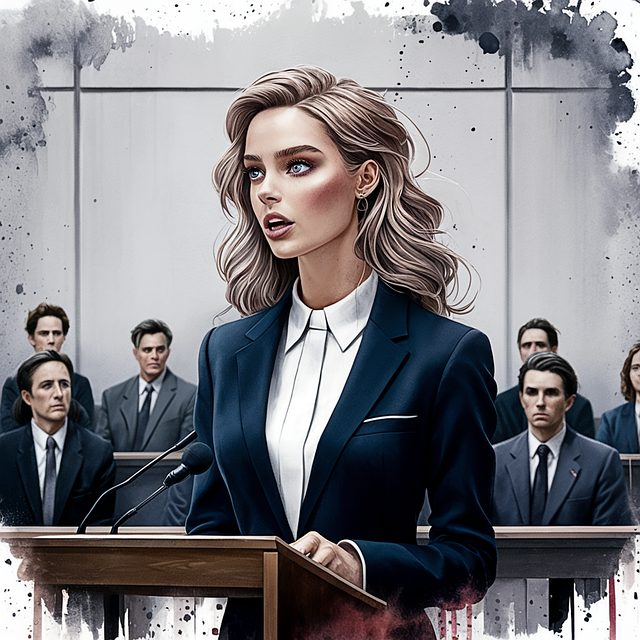Youth Justice and Fair Treatment are interconnected goals, focusing on supportive systems for young people involved in criminal activities. Recidivism Reduction Programs offer essential services like education, mental health care, and job training to break the cycle of crime. Effective strategies include early intervention, education, skills training, and addressing social determinants like poverty and trauma. Rehabilitation programming within correctional facilities, community-based interventions, restorative justice practices, and personalized education equip at-risk youth with skills to reintegrate successfully. Community engagement, with culturally sensitive interventions, encourages accountability and fosters rehabilitation environments conducive to reducing recidivism rates.
Youth Justice Fair Treatment is a critical issue in modern society, aiming to ensure equitable outcomes for young people involved in the criminal justice system. This article explores various facets of this complex topic. We begin by deciphering youth justice and fair treatment, delving into the profound impact of recidivism on vulnerable offenders. Subsequently, we uncover effective Recidivism Reduction Strategies, highlighting the transformative power of education and rehabilitation programs. Finally, we emphasize the community’s pivotal role in fostering positive change through engagement.
- Understanding Youth Justice and Fair Treatment
- The Impact of Recidivism on Young Offenders
- Effective Strategies to Reduce Recidivism Rates
- Role of Education and Rehabilitation Programs
- Community Engagement for Positive Change
Understanding Youth Justice and Fair Treatment

Youth Justice and Fair Treatment go hand in hand, aiming to create a system that understands and addresses the unique needs of young people involved in the criminal justice process. It’s about ensuring that interactions with the law are not only fair but also contribute to positive growth and reintegration into society. This involves acknowledging the distinct developmental stage and circumstances that often lead youth down a path of criminal activity, with the goal of diversion and rehabilitation rather than solely punishment.
Fair treatment strategies, such as Recidivism Reduction Programs, focus on providing support services like education, mental health care, and job training to address the underlying causes of delinquent behavior. By implementing these initiatives, we can disrupt the cycle of crime and create a more just and effective justice system that fosters successful reentry for young individuals into their communities.
The Impact of Recidivism on Young Offenders

Recidivism, or the re-offending of young offenders, is a significant challenge in youth justice systems worldwide. It has far-reaching consequences, not only for individual young people but also for communities and society at large. When a young person re-offends, it often leads to a cycle of incarceration, further marginalizing them and hindering their chances of rehabilitation and successful reintegration into society. This recurring pattern is a major concern as it indicates that existing interventions are not effectively addressing the underlying issues that drive youth to reoffend.
Addressing recidivism requires a multi-faceted approach. Recidivism reduction strategies should focus on early intervention, education, and skills training to equip young offenders with alternatives to criminal behavior. Additionally, understanding and tackling the social and psychological factors contributing to reoffending is vital. This includes addressing issues like poverty, lack of access to quality education, mental health problems, and trauma. By implementing evidence-based programs that target these root causes, there is a greater chance of breaking the cycle of recidivism and fostering positive change in the lives of young offenders.
Effective Strategies to Reduce Recidivism Rates

Youth justice systems around the globe are increasingly focusing on effective recidivism reduction strategies to foster a more positive and lasting impact on young offenders. One key approach is rehabilitative programming within correctional facilities, which goes beyond traditional punishment. This involves providing educational and vocational training, counseling services, and skills development programs tailored to address the underlying factors contributing to criminal behavior. By empowering youth with new skills and perspectives, these initiatives aim to disrupt the cycle of recidivism and promote successful reintegration into society.
Additionally, community-based interventions play a crucial role in reducing recidivism rates. Early intervention programs target at-risk youth before they engage in criminal activities, offering support and alternatives through mentorship, after-school activities, and social services. Restorative justice practices, which emphasize accountability and repair rather than punishment, have also shown promise. These strategies encourage dialogue between offenders and victims, foster empathy, and promote community healing, ultimately reducing the likelihood of reoffending.
Role of Education and Rehabilitation Programs

The role of education and rehabilitation programs in youth justice cannot be overstated, especially in the context of achieving fair treatment and reducing recidivism. These programs are designed to equip young individuals with the necessary skills and knowledge to reintegrate into society successfully. By focusing on personal development, vocational training, and counseling services, these initiatives aim to address the underlying factors contributing to criminal behavior. Through such measures, at-risk youth can learn positive coping mechanisms, build self-esteem, and gain employable skills, thereby lowering the chances of future involvement in the justice system.
Education and rehabilitation serve as powerful tools for societal change by fostering a more inclusive environment. These programs often incorporate specialized curricula tailored to address the unique needs of young offenders. By implementing evidence-based recidivism reduction strategies, such as education-focused interventions, communities can break the cycle of crime and promote positive growth. This holistic approach ensures that youth not only learn from their mistakes but also gain the resources needed to build a brighter future.
Community Engagement for Positive Change

Community engagement plays a pivotal role in promoting fair treatment within youth justice systems, offering powerful tools to combat recidivism and foster positive change. By actively involving communities, especially those directly impacted by the criminal justice system, we can create a network of support that addresses the root causes of youth involvement in crime. This approach ensures that interventions are culturally sensitive and tailored to the specific needs of at-risk youth.
Through community engagement, individuals with personal experiences can contribute insights that inform policy changes, program development, and practice improvements. Such participation encourages accountability, ensuring that justice initiatives reflect the diverse perspectives within society. When communities actively participate in recidivism reduction strategies, they become integral to a systemic shift, fostering an environment where youth are supported, rehabilitated, and successfully reintegrated into society.
Youth justice focuses on ensuring fair treatment for young offenders, aiming to rehabilitate and reintegrate them into society. By understanding the impact of recidivism and implementing effective strategies like education, rehabilitation, and community engagement, we can significantly reduce recurrence rates. These recidivism reduction strategies not only benefit individuals but also foster safer and more resilient communities.






